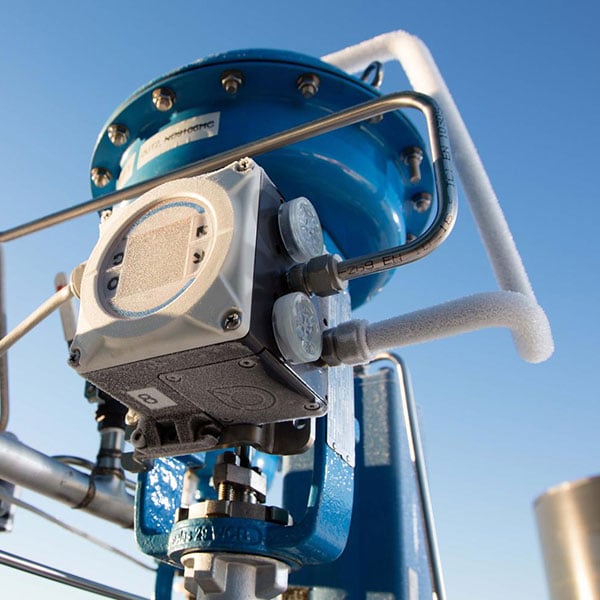Recognizing the Importance of Control Valves in Process Automation
Recognizing the Importance of Control Valves in Process Automation
Blog Article

Maximize Power Savings and Comfort With Advanced Building Automation Controls
In the realm of contemporary architecture and facility administration, the combination of sophisticated structure automation controls stands as a crucial advancement. By utilizing the power of automation, structures can adjust, react, and evolve in ways that were as soon as unbelievable.
Energy Efficiency Benefits
Energy performance advantages can substantially decrease power usage and functional prices in buildings. By implementing energy-efficient techniques and technologies, structure proprietors and operators can achieve significant cost savings while likewise adding to environmental sustainability. Among the key advantages of boosting power effectiveness in buildings is the decrease of energy costs. Energy-efficient systems, such as advanced structure automation controls, can enhance the use of sources like air conditioning, lights, and heating, causing reduced energy expenses in time.
Additionally, enhanced energy effectiveness can extend the life expectancy of building equipment and systems. By operating extra efficiently, HVAC systems, lighting fixtures, and various other building parts experience less damage, resulting in minimized maintenance and substitute expenses. In addition, energy-efficient buildings frequently regulate greater building worths and rental rates, giving long-lasting financial advantages to owners.
Furthermore, energy effectiveness can enhance passenger convenience and productivity. Appropriately regulated indoor environments with optimal illumination and thermal problems create an even more pleasurable and favorable work space, causing enhanced staff member complete satisfaction and performance. Generally, the energy performance benefits related to advanced building automation controls are diverse, including cost savings, ecological stewardship, and passenger well-being.
Enhanced Convenience Control
Enhancing convenience control in building settings calls for a sophisticated assimilation of innovative automation systems for optimal resident wellness. By making use of sophisticated building automation controls, centers can customize the indoor atmosphere to satisfy the specific requirements and choices of occupants. control valves.
Enhanced comfort control surpasses basic temperature changes. It consists of features such as individualized settings, tenancy sensing units, and all-natural light application to create a responsive and vibrant setting. By including these innovative controls, buildings can not just boost comfort however additionally boost power effectiveness by maximizing system procedures based on actual tenancy and use patterns. Inevitably, focusing on resident convenience with innovative automation systems causes a more enjoyable and healthier indoor setting.
Functional Performance Improvements

Additionally, the implementation of real-time monitoring and analytics tools enables building drivers to determine energy ineffectiveness and functional abnormalities without delay. By constantly monitoring energy use patterns and system efficiency metrics, adjustments can be made in real-time to maximize energy intake and guarantee peak operational performance. control valves. Additionally, including demand reaction methods into building automation controls can further improve operational effectiveness by dynamically changing energy usage based upon grid problems and pricing signals
Indoor Environment Optimization
Efficient interior climate optimization is a fundamental element of structure automation controls, ensuring residents' comfort and well-being while making the most of energy savings. By using sophisticated sensors and controls, developing automation systems can constantly check and change temperature, moisture degrees, air top quality, and ventilation to create an optimal indoor environment. Keeping comfortable and consistent problems not just boosts owner satisfaction however likewise enhances efficiency and total health.
Interior climate optimization also plays an essential duty in power effectiveness. By fine-tuning air flow, air conditioning, and home heating systems based on real-time data and tenancy patterns, building automation controls can considerably decrease power consumption - control valves. For circumstances, applying approaches such as demand-controlled ventilation and thermal zoning can aid minimize power waste while guaranteeing that each location of the structure obtains the required conditioning.

Sustainable Atmosphere Creation
Building automation manages not only maximize indoor climate conditions for energy efficiency and passenger convenience yet additionally lay the foundation for creating a sustainable environment through critical management of sources and systems. By incorporating advanced structure automation innovations, such as sensing units, actuators, and intelligent software application, centers read this article can readjust and check energy usage in real-time to reduce waste and minimize their carbon footprint. These systems allow anticipating maintenance, identifying potential problems before they rise and optimizing devices efficiency to boost longevity and performance.
Additionally, sustainable environment development extends beyond energy management to encompass water preservation, waste decrease, and indoor air top quality renovation. Structure automation controls can manage water use, spot leakages, and guarantee proper garbage disposal methods, contributing to general sustainability efforts. Furthermore, by managing and keeping track of ventilation and purification systems, these technologies enhance passenger health and wellness and productivity while reducing energy intake connected with a/c operations.
Final Thought
In conclusion, progressed building automation manages deal substantial advantages in terms of power savings, convenience control, operational effectiveness, indoor environment optimization, and creating a lasting environment. By implementing these controls, buildings can attain ideal performance while minimizing energy usage and improving occupant comfort. It is apparent that the usage of innovative automation innovation is vital in boosting structure efficiency and creating a more lasting future.
Power effectiveness benefits can significantly minimize power intake and operational expenses in buildings. Generally, the energy effectiveness benefits associated with sophisticated building automation controls are multifaceted, incorporating price savings, environmental stewardship, and owner well-being.
Additionally, including demand action approaches right into structure automation controls can further boost operational efficiency by dynamically readjusting energy use based on grid problems and rates signals.
Structure automation manages not just enhance indoor climate problems for energy go to this web-site effectiveness and owner comfort however additionally lay the structure for producing a sustainable atmosphere with strategic administration of systems and sources.In verdict, advanced structure automation regulates deal significant advantages in terms of energy financial savings, comfort control, operational performance, indoor climate optimization, and creating a lasting atmosphere.
Report this page